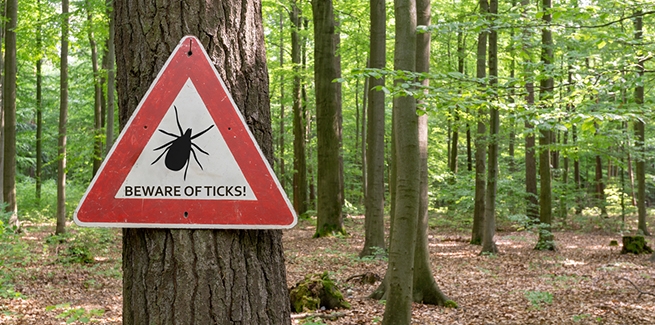Interactive online maps give veterinarians a 30-day local parasite forecast

It’s one thing to know the risk of vector-borne parasites on a national scale thanks to annual national projections. It’s quite another to know the risks in your own backyard.
And now you’re able to.
The Companion Animal Parasite Council (CAPC), the leading source on parasitic diseases that threaten the health of pets and people, released its annual 2019 national parasite forecast this week, along with something new—corresponding 30-day local forecast maps to alert veterinarians and pet owners of pending outbreaks in their area.
These maps are a game changer.
The 30-Day Parasite Forecast Maps allow veterinarians and pet owners to monitor parasite activity in their home county throughout the year by providing a monthly local forecast for every county in the continental United States.
NEWStat reached out to Christopher Carpenter, DVM, MBA, executive director of the CAPC, and Heather Stockdale Walden, PhD, assistant professor of parasitology at the University of Florida College of Veterinary Medicine and CAPC board member, to find out more about this invaluable new tool.
NEWStat: When and why did CAPC develop their forecast maps?
Christopher Carpenter: CAPC started creating maps in 2012 to remind pet owners and veterinarians that [the movements of] parasites are dynamic and ever changing.
The best analogy I can share is that when you’re about to travel to another city, you look at your smartphone for the weather forecast in that area. Our vision is to provide that same type of timely and local data to pet owners and veterinarians. With the launch of the 30-day forecast maps, we took a big step forward in that direction. We’re now providing county-by-county forecasts, every 30 days for 4 different vector-borne diseases. This is a phenomenal tool for veterinarians to use to increase awareness of the activity in their area.
NEWStat: How accurate are the maps?
We have been forecasting for eight years and . . . our accuracy has never gone below 94%. We’ve leveraged this expertise in [national] parasite forecasting to develop these local forecasts. Since we’ve just launched them this year, we haven’t had the chance to do a retroactive analysis but we’re expecting similar fidelity to our annual forecasts.
NEWStat: Which vector presents the biggest threat in 2019?
CC: [Essentially], you’re asking which vector is most adaptable and spreading the most because of this. Both the mosquitos and ticks seem to be expanding their ranges but, to me, the tick seems to be the most resilient vector there is. Ticks are definitely expanding their ranges and transmitting more diseases than I was taught when I was in veterinary school.
Heather Stockdale Walden: I agree with Chris. Ticks are definitely expanding their ranges, which puts them in closer contact with more pets and their humans. The tick species will depend on what part of the country you live in, which will also determine the pathogens you will most likely encounter. We also have to think about new tick species found here in the US, such as Haemaphysalis longicornis, [for which] we don’t know [what] the full potential is for pathogen transmission. The best thing to do is actively check yourself and your pet if you’re in areas where you know high tick populations exist, and don’t assume a pathogen or parasite isn’t in your area because you’ve never diagnosed it before. With the increase in travel of hosts [accompanied by] their parasites, [combined with] warming temperatures that can make suitable environments for more parasite species, anything is possible.
NEWStat: How can veterinarians help raise awareness of the threat of vector-borne diseases and the importance of taking preventive measures?
CC: These 30-day forecasts at are extremely pet-owner friendly and the perfect way for a veterinary hospital team to . . . engage pet owners on the topic of parasites by showing them . . . that the risk to their pets is increasing. Every veterinary hospital team should use these maps to engage the pet owners in their community.
Photo credit: © gabort71



